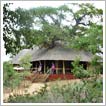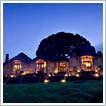
Wildlife Safari Gear List
Top quality mountaineering clothing and equipment is an investment that will see you through years of adventures. It is wise to choose carefully, and not to skimp on quality. The companies and products you see listed below can serve as starting points of reference for you. Take this list to your local outdoor specialty shop.
Feel free to use this list as a reference as you prepare for your trip, but note that not all brands and models are current.
Footwear:
Running shoes: For travel & easy walking.
Sport sandals: Open toe model that can be worn with socks. (Teva, Chaco)
Lightweight socks: Three pairs Synthetic/Wool Blend (Fox River, Patagonia, Smartwool)
Clothing:
Clothes for safari: Two to three changes depending on the length of safari.
Comfortable travel clothes: Days are dusty, cool in the mornings, warm in the middle of the day. At the end of the day we return to our lodge where you will shower and change for a nice dinner.
Lightweight travel jacket: Simple wind shirt or light fleece. Average evening temperatures in Arusha, Tanzania and Nairobi is in the 40’s F (5 – 8 C) in July and August. December and February are warmer, but evenings and mornings at higher altitudes on safari are always a little cool.
Warm jacket: To keep from getting chilled in the evening you may choose to bring a warm jacket. Also makes a nice pillow on the airplane.
Work-out clothes and/or bathing suit: Simple and versatile, for hotels.
Head & Hand Gear
Sun hat: Any lightweight hat with a good brim or visor.
Bandanas: One or two traditional cotton.
Accessories
Sunglasses: One pair High quality 100% UV 100%IR, for safari and lower elevations.
Headlamp: For reading at night or in the early morning.
Daypack: To keep your water, camera and jacket in while on safari.
Duffel: For transporting all your items between safari lodges. You may choose to use traditional style luggage but keep in mind that it can be dusty during safari.
Water Bottles: Two one- liter, leak-proof wide-mouth (Nalgene Poly or Lexan bottles)
Medical & Personal
Sunscreen: SPF 30 or higher, non-oily (L’Oreal or Terrapin)
Lipscreen: SPF 30 or higher, any brand
Toiletry kit: Toothbrush, toothpaste, skin lotion, alcohol-based hand sanitizer, soap, comb/brush, shave kit, (bring travel size bottles to keep your kit small).
Zip-loc bags: They can be very useful so bring plenty.
Baby wipes / wet wipes
Travel Items
Passport belt/pouch
Small padlocks: For locking duffel bags
Books
Journal</p>
Binoculars: Optional. High quality, 8X32 or 10X42. Great for safari
Camera, lenses, video camera
Film and / or memory cards for digital camera: Bring plenty, as well as plenty of camera batteries. Film is expensive in East Africa and memory cards are generally not available. Be sure to keep film in your carry-on luggage, in clear zip lock bags so that it can be inspected.
Suggested Reading List
Knowledge about a country’s history, language and culture greatly increases the traveler’s experience. Even the smallest bits of information on language and culture can open many doors and allow diverse communication between guest and host.
East Africa Handbook with Kenya, Tanzania, Uganda and Ethiopia; Michael Hodd
The Safari Companion; Richard D. Estes
Africa, A Biography of the Continent; John Reader
Lonely Planet Guide for East Africa
Lonely Planet Guide for Tanzania
Kilimanjaro Trekking Map, publisher: I.B. Tauris and co.




